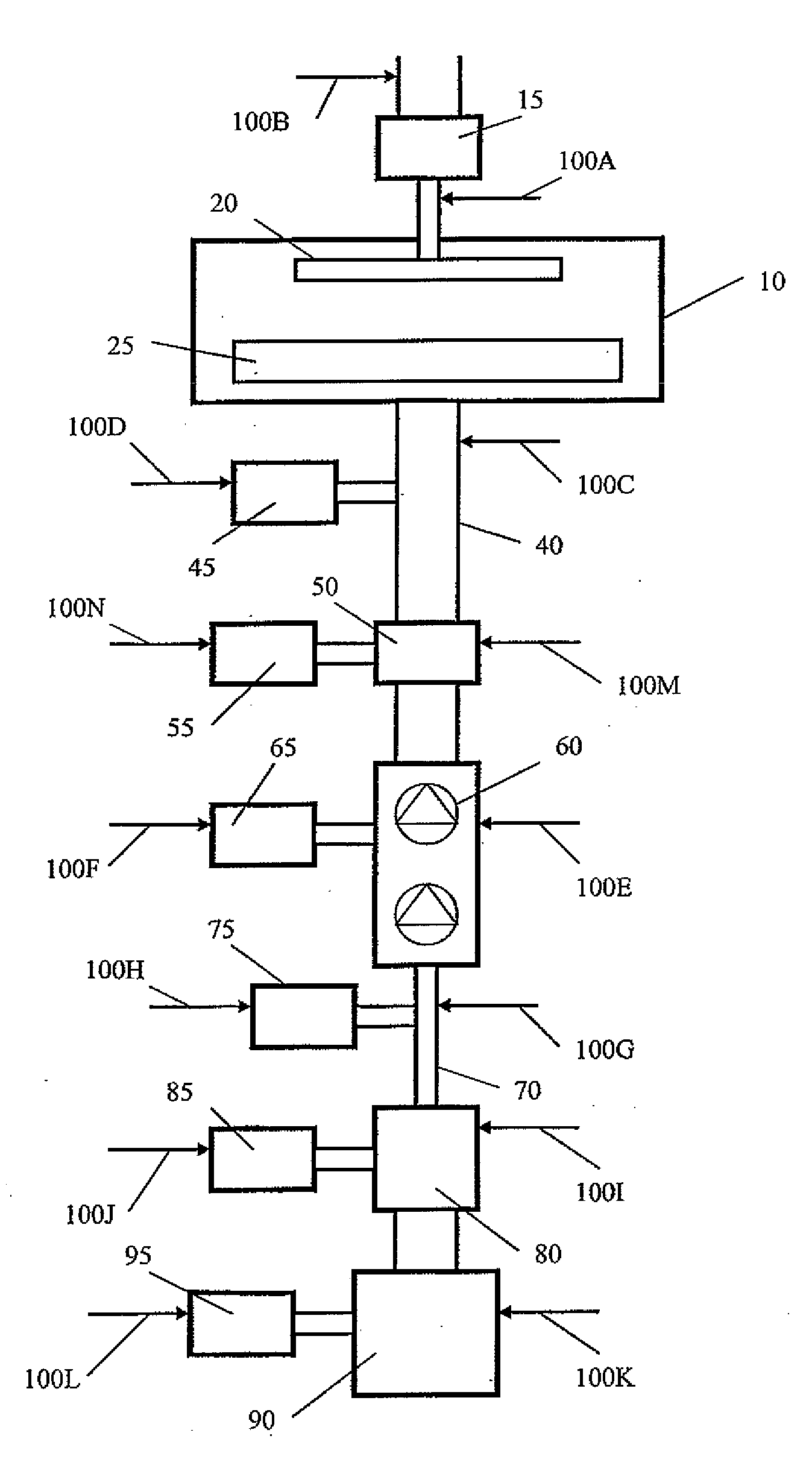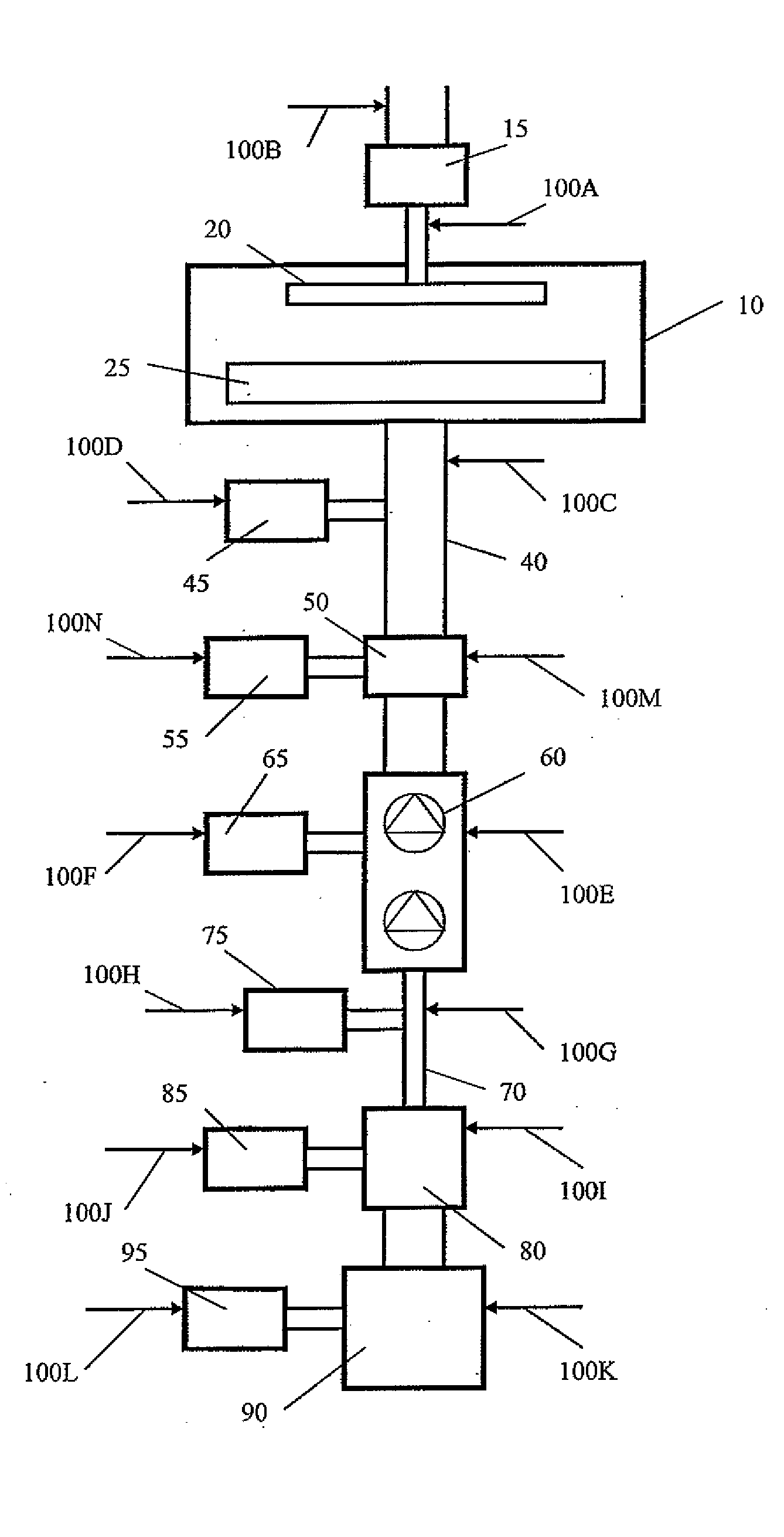Prevention of post-pecvd vacuum and abatement system fouling using a fluorine containing cleaning gas chamber
a technology of cleaning gas chamber, which is applied in the direction of cleaning process, equipment, coatings, etc., can solve the problems of affecting the cleaning effect of the device being manufactured, unwanted deposits can also be formed downstream of the chamber, and other undesirable effects, so as to reduce the cleaning time of the chamber and improve the cleaning effect. , the effect of reducing the fouling of the vacuum and abatement system
- Summary
- Abstract
- Description
- Claims
- Application Information
AI Technical Summary
Benefits of technology
Problems solved by technology
Method used
Image
Examples
Embodiment Construction
[0008]The present invention provides methods and apparatus for reducing post PECVD vacuum and abatement system fouling. Processes for the fabrication of thin films and thin film devices can be improved by utilizing the present invention, wherein chamber and equipment cleaning times can be reduced leading to increased efficiency and lower costs. In general, the present invention provides these advantages by introducing F2 or a fluorine containing gas into the PECVD system. The cleaning gas can be introduced at a number of different locations throughout the system and in a number of different ways, as will be more fully described below with reference to the drawing FIGURE.
[0009]The FIGURE is a schematic drawing of a PECVD system according to the present invention, including a deposition chamber 10 having plasma discharge equipment 20, 25 for activation of the deposition gases. The deposition chamber 10 is fluidly connected with a vacuum pump system 60 through a vacuum pump foreline 40...
PUM
| Property | Measurement | Unit |
|---|---|---|
| thick | aaaaa | aaaaa |
| fouling | aaaaa | aaaaa |
| energy | aaaaa | aaaaa |
Abstract
Description
Claims
Application Information
 Login to View More
Login to View More - R&D
- Intellectual Property
- Life Sciences
- Materials
- Tech Scout
- Unparalleled Data Quality
- Higher Quality Content
- 60% Fewer Hallucinations
Browse by: Latest US Patents, China's latest patents, Technical Efficacy Thesaurus, Application Domain, Technology Topic, Popular Technical Reports.
© 2025 PatSnap. All rights reserved.Legal|Privacy policy|Modern Slavery Act Transparency Statement|Sitemap|About US| Contact US: help@patsnap.com


